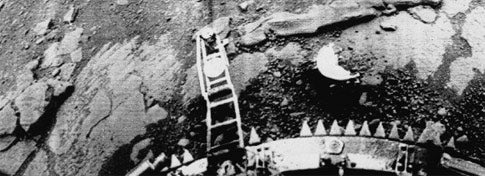A pair of planetary geologists at Imperial College, London, studying Venus’ craters has thrown widely accepted theories on the planet’s volcanic past into question. Computer modeling of our sister planet’s impact history led Timothy Bond and Mike Warner to suggest that the global volcanic catastrophe long thought to have resurfaced the planet never happened.
NASA’s Magellan spacecraft mapped 98 percent of Venus’ surface between 1990 and 1994. When this data was later analyzed, researchers noticed that the distribution of craters was random and that the craters themselves were largely undamaged by volcanic activity. These findings, when coupled with the relatively small number of craters they found — fewer than 1,000 — led them to believe Venus had experienced little volcanic activity in the past 500 million years.
To explain these discoveries, researchers suggested the planet went through an intense and rapid volcanic resurfacing 500 million years ago, during which time magma flowed over old craters and, essentially, wiped the planet clean of past bombardment. They argued the planet then entered a long period of volcanic inactivity, which preserved any subsequent impact craters. These suggestions snowballed into an accepted theory that Venus went through periodic catastrophic eruptions followed by long silent periods throughout its history.
But Bond and Warner would not accept this theory. “No planets that we knew of had experienced eruptions of this size and speed,” comments Bond. “That really put doubts in our minds.” So, in 2000, they set to work computer modeling the surface of our fiery neighbor.
When they compared the sizes and shapes of impact craters on Venus to craters in their model, they realized an enormous eruption 500 million years ago was not necessary to explain the planet’s current surface. Instead, they found that randomly timed volcanic eruptions of varying size — similar to those on Earth — could explain what researchers see today.
“Nobody tested the idea that past eruptions on Venus could have been larger in size than those that happen today,” comments Bond. If eruptions happened at random intervals on the planet, and if they steadily decreased in size over time, this explains the planet’s crater-marked surface better than the idea that Venus was blown to smithereens 500 million years ago, Bond and Warner maintain. The two presented their findings in March at the Lunar and Planetary Science Conference in Houston.










